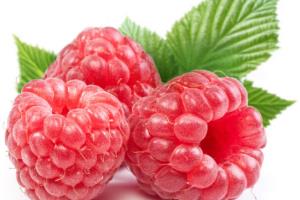What are the aquaculture methods of Guanyinlian that take you to the world of succulent plants
The Guanyin lotus is shaped like a pagoda, and the white, pure and beautiful bracts are dotted with bright lip-shaped yellow flowers. when they are small, they are unnecessarily cute. Such succulent plants are deeply loved by consumers, so they walked from the florist into the backyard of many families and became the embellishment of the courtyard. So, what are the breeding methods of Guanyinlian? Today, the editor will take you to the world of succulent plants.

Guanyinlian is native to tropical Asia and America. There are about 70 species of plants in the genus. In addition to Guanyin lotus, there are also big Guanyin lotus, beautiful leaf Guanyin lotus, pointed tail taro and so on. Its ecological habit is warm, humid and semi-shady growth environment, the suitable growth temperature is 20 ℃ 30 ℃, and the overwintering temperature is 15 min.
Guanyinlian is commonly used for ramet propagation. Generally, when the temperature is high in spring and summer every year, the plants with dense tillers of underground tubers are divided along the tuber separation place, so that each part has 3 plants, and then they are planted in the pot. At the same time, it is advisable to keep the basin soil moist and pay attention to foliar spray to facilitate the restoration of new plant growth. It can also dig out the underground tuber before the new buds grow in spring, separate the tuber segments, disinfect the wound with plant ash or sulfur powder, wrap it with water moss after slightly drying, or put it in loose soil with ventilation and drainage, so that it can grow adventitious roots and grow new buds. Don't get too wet in the matrix here, so as not to rot the tuber. The plant can also be propagated by sowing, but the seeds are not easy to get.
Guanyin lotus pot cultivation should use loose, well-drained soil rich in humus, generally can use the same amount of rotten leaf soil, garden soil and river sand as the substrate. The peak growth period is from April to September, when the soil is moist and the air humidity is high, and sufficient water should be given; especially in the summer high temperature period, the leaf water evaporation is large and the water demand is more, such as the lack of water is very easy to wilt the leaves, so it is necessary to often spray water to the leaves and keep the environment moist at the same time, but water accumulation in the basin must be avoided, otherwise it will cause root rot. When the autumn temperature is below 15 ℃, the growth of Guanyinlian stagnates and shows a dormant state, and the aboveground leaves begin to wither gradually, at this time, we must try our best to reduce the amount of water, put it in a warm, Phoenix-free dry place, and keep the basin soil properly dry (only slightly wet) to survive the winter safely; if the humidity is high and the temperature is low, the tuber is extremely easy to rot.
During the whole growing period, Guanyin lotus is required to grow under semi-overcast conditions. if the light is too strong, it is easy to make the leaves dim and sunburn, but too weak light can easily lead to overgrowth, and the plant growth is slender and easy to lodge. In the peak growth period, according to the situation of plant growth, dilute liquid fertilizer should be applied twice a month, and phosphorus and potassium fertilizer should be added to make the stem of the plant erect and grow healthily. at the same time, it is beneficial to the growth and enrichment of a tuber and cold resistance in winter.
The above is about the breeding methods of Guanyinlian, which can be used as the main reference for your breeding of Guanyinlian in the future. Moreover, Guanyin lotus-shaped compact straight, picturesque veins, very poetic, for a unique style of foliage plants. The Guanyin lotus is planted in small and medium-sized pots to decorate the study, living room, bedroom and office, making it more noble and elegant.
Related
- Wuhan Hospital Iron Tree Blooming Result Was Instantly Frightened by the Gardener Master
- Which variety of camellia is the most fragrant and best? Which one do you like best?
- What is the small blue coat, the breeding methods and matters needing attention of the succulent plant
- Dormancy time and maintenance management of succulent plants during dormancy
- Minas succulent how to raise, Minas succulent plant pictures
- What are the varieties of winter succulent plants
- How to raise succulent plants in twelve rolls? let's take a look at some experience of breeding twelve rolls.
- Attention should be paid to water control for succulent plants during dormant period (winter and summer)
- Watering experience of twelve rolls of succulent plants
- Techniques for fertilizing succulent plants. An article will let you know how to fertilize succulent plants.



